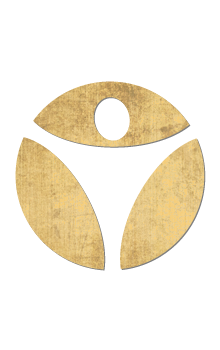What is the best way to loosen up tight hips and increase hip mobility?
- Updated on: July 8, 2022

You want to loosen up tight hips, but it feels like you’ve tried it all without any success…
- Stretching that causes more harm than good
- Costly equipment like massage tools and hip hooks that just collect dust in your closet
- The endless rounds of chiropractors and massage appointments that only offer temporary relief and another to-do item on your already busy calendar…
While each of these solutions has the potential to help loosen your tight hips, they don’t often solve the problem because they’re being used in isolation. The best way to loosen tight hips is to do so holistically. By assessing your daily habits and practicing an intentionally designed yoga sequence, you can develop flexibility safely and sustainably without any fancy equipment or bank-breaking appointments.
In this blog we’ll explore how your lifestyle may be contributing to your hip tightness and offer ways to incorporate yoga as a well rounded, holistic solution to your hip flexibility goals.

Why are my hips tight?
You’re likely wondering what is causing your tips to be tight. Before we seek solutions, it’s important to find the root cause. Most hip tightness stems from shortened, tense hip muscles. Muscles can become shortened due to lack of regular movement, lots of regular movement (like running, Crossfit and biking) without stretching, as well as stress. Let’s explore each of these root causes of tight hips so that you can begin to explore what is and is not working in your own daily routine.
The Desk Worker
Hip tightness is extremely common in people who sit during the day. If you work a desk job or are seated for extended periods of time, your muscles will eventually shorten. That’s because they are in one position throughout the day and haven’t had the opportunity to move or elongate. This can shorten the rectus femoris muscle, which runs straight down the thigh. It and the surrounding muscles will contract and tighten.
The Athlete
Athletes experience hip tightness for very different reasons than desk workers. Instead of inactivity, there may be too much repetitive activity without the opportunity to stretch or restore. We will primarily see this in runners, Cross-fitters, and bikers. During these kinds of exercise, the muscles of the hips and thighs help you with stability and power. They are constantly engaged and firing as you move through your workout. While they are strong, the constant engagement can leave them shortened and tense. If they aren’t stretched properly and regularly, this is likely the cause of your hip tightness.
The Stressed Out
When we think of tension due to stress, it’s easy for many of us to connect stress with tight shoulders or even a headache. We don’t often realize that the hips can also hold a lot of tension in the body when we feel stressed out. Hip tightness is often our body’s stress response and a result of fight or flight instincts. Unconsciously, you may be tightening these muscles as the body prepares you to run or get ready for action.

How to loosen tight hips the right way
To care for your hips, you will want to choose exercises that tend to all the needs of your hips. Stretching alone isn’t enough. You may not be sure where to begin, or you may push yourself to stretch muscles too quickly. If your muscles aren’t ready to be opened up you can potentially cause more pain and even injury. However you choose to loosen your hips, you will want to find a balance of the following elements:
- Develop and maintain the range of motion of your hips (a ball-and-socket joint)
- Strengthen the muscles that surround the hips (such as the glutes)
- Safely stretch and elongate tight muscles in the hip area
Finding a routine that tends to all three portions is key. This will help you develop flexibility that is supported by strength and stability throughout the hip region.

Yoga helps loosen up tight hips
Yoga is the best way to loosen tight hips. It will provide you with much better long-term and short-term results than other solutions. For example, isolated stretching or self-massage may offer temporary relief, but do not provide the long-term benefits that come from a more holistic approach. Yoga allows you to stretch mindfully, strengthen strategically, and move fluidly. Yoga will allow you to work with your body, rather than fight against it. When we stretch the body deeply without warming it first, we are actually working against it instead of working with it. This can cause more harm than good. Yoga helps you get the most from each stretch in a way that is safe and sustainable.
This is good news, because whether you’re an experienced yogi or are brand new to the practice, you can find a yoga routine that’s right for you. Yoga is accessible to all. So toss away your preconceived notions of needing to be “flexible” to start. Developing your flexibility is the POINT.
Yoga is ideal for loosening hips because there are so many different poses that can tend to the different hip regions. You’ll be able to target the specific muscles and tendons that are causing tightness in your body such as the psoas, hip flexors, adductors, and the IT band.
When we practice yoga, we are also able to intentionally create movement, slow engagement, and heat in the body. Making sure the muscles are warm before stretching deeply can help you prevent injury and achieve a deeper stretch gradually and with control.

Which yoga poses will loosen my tight hips?
The hip region is more complex than we tend to realize. It is important to notice where you are experiencing the most tightness, or even pain, so you know where to focus your energy. Here we will offer ideas to warm up the body, strengthen muscles that support the hips, and break down the poses to stretch the outer and inner hips.
It’s important to remember that everything is connected and approach your flexibility with a holistic approach. If you are experiencing inner hip tightness, it can be helpful to also stretch the outer hips and vice versa. That’s because our muscles, joints and tendons are connected by fascia and are all interconnected. Warm The Body
Before you dive into any deep stretch, you will want to warm your body first. In yoga, we often do this by practicing Sun Salutations. Each posture fluidly leads to another. Connect each inhale and exhale to your movements as a perfect warm-up to your hip stretching routine.
Sun Salutation A
- Start in Mountain Pose.
- Reach your arms overhead.
- Forward fold (uttanasana)
- Rise halfway to a flat back (fingers on mat or shins)
- Step back to Plank Pose
- Lower down – Knees, Chest, and Chin or Chaturanga Dandasana
- Cobra or Upward Facing Dog
- Downward Facing Dog
- Step, Hop, or Jump to a Forward Bend
- Come back to mountain pose.
- Repeat this sequence. Start with 3-5 rounds and work your way up to 10 or even 12.
- If you want to continue to warm your body, you may even try Sun Salutation B. Once your body is warm, you can move into your hip targeting postures.
How to strengthen the glutes
Next you can focus on strengthening the muscles that support your hip mobility. Often our hips are tight because the muscles that support them are weak. The glutes are an excellent place to work on building strength. The three muscles that make up the glutes include the gluteus maximus, gluteus medius and gluteus minimus. Here are some of our favorite glute strengthening postures:
Bridge Pose (Setu Bandha Sarvangasana)
Begin lying on your back. Bend your knees and bring your feet in toward your buttocks. Soles of the feet are firmly pressed into the mat and are parallel to each other. Palms are face down alongside the body. Press the hips up. Glutes will engage as the hips open. To deepen the stretch you may walk the shoulders underneath the body until the palms can clasp together. Hold for 10-20 seconds. Repeat 2-3 times.
For more detailed instructions, check out this blog we dedicated to the ins and outs of this posture.
Locust Pose (Salabhasana)
Start on your abdomen with your arms alongside your body. Your palms are flat and your fingers will reach toward your toes. With your toes pointed, lift your torso away from the floor. Arms and legs reach up and back. Be sure to breathe steadily and hold the posture for about 10-20 seconds. Engage the glutes and press your hips actively into the floor as you continue to peel open the chest. This will strengthen the glutes, legs, and muscles of the back while allowing the front body to open. Repeat 2-3 times.
The Best Hip-opening Yoga Poses
Now that the body is warm and you’ve actively engaged the complementary muscle groups, you are ready to stretch and open the hips. Here are some of our favorite poses for loosening tight hips. This is a great place to start, but the beauty of yoga is there are so many other ways to open the hips. Use this as a starting point, but know it is not an exhaustive list and there may be other postures that can help you continue to develop your flexibility further.
As you explore new hip opening postures, keep yoga blocks or a blanket nearby. Props can be an excellent way to achieve the desired stretch in a safe and sustainable way. Be sure to check out our in-depth blogs that can guide you through each of the postures listed below.
Low Lunge allows you to open the hip flexors, groin, thighs, and front body. Lunge deeply into one knee while allowing the other knee to rest on the floor. Make it more active by raising your arms up toward the ceiling.

Lizard Pose. This pose is especially helpful to combat the negative effects of prolonged sitting or inactivity. It opens the inner hips while also strengthening and stretching the glutes, hamstrings, and spine. We have an entire blog post on this posture!

Pigeon Pose will help you stretch the outer hips and glutes. It will also help lengthen the spine and reduce low back tension. If you have especially tight hips, check out these modifications to make it more accessible (not just for guys!).

Child’s Pose. With your knees wide, sit your hips back to your heels. This is a restorative posture that will help you slowly open your hips while maintaining control over the depth of the stretch. This posture can be as passive or active as you need.

Baddha Konasana, also called Bound Angle Pose. All of these names are just fancy ways to say the butterfly pose you likely did as a kid! Support your knees with blocks as you develop your flexibility here, or you can fold your torso over your legs for a deeper stretch.

Reclined Figure Four. Lying on your back, bend your knees bringing heels towards your buttocks. Bring one knee towards your chest and then allow the knee to open wide as you bring your outer heel to cross above the opposite knee. Interlace your fingers behind your thigh (or use a strap) to pull the knee in toward your chest gently until you’ve achieved the desired depth.

How to include yoga in your routine
Most habits and new practices take time to introduce into your routine. It is best to find simple ways to incorporate yoga into your daily life to suit your lifestyle, preferences, and needs. Depending on the root causes of your hip tightness, you might consider introducing the following yoga routines into your day.

For Desk Workers
While you may not be able to change the nature of your working situation, you can take action to reduce the negative effects of sitting for long periods of time.
- If you find yourself sitting throughout the day, you can intentionally schedule in stretch breaks. Set a timer or calendar event to remind you to stand up, walk around, and incorporate some yoga poses into your work routine.
- Can’t get away from your desk? Chair yoga offers all of the same benefits of any other yoga practice. Seated Cat/Cow, Chair Child’s Pose, Chair Pigeon or a Chair Yoga Lunge Pose are simple postures you can try that will allow you to bring movement into your day, even if you can’t step away.

For Athletes
By no means should you stop enjoying your favorite exercises. Being sure to care for your body through yoga will complement your fitness routine so you can continue to run, swim, or bike better. You’ll continue to enjoy athletics for many years to come.
- If you are an athlete experiencing hip tightness, be sure to stretch before and after your workout to help lengthen the muscles and hip flexors. Before activity, your stretching should be light and gentle. After your body is warm, you can deepen your stretches safely.
- It can be tempting just to power through your workout, but be mindful of how your body is influenced by the exercises and be intentional during your recovery time. Practice yoga proactively to avoid tightness instead of just using it to respond to a symptom.
- Athletes will want to focus more on hip mobility and yoga postures such as frog pose or a yogi squat to help counter the regular engagement of tight hip muscles.
- You may also benefit from soaking tight muscles in an epsom salt bath to reduce inflammation or self-massaging the tight area.
For Stress Relief
If you think stress is influencing your hip tightness, explore ways to decrease your stress. While you may not be able to change external circumstances in your life, you can add some stress relieving practices to your daily rounds.
While yoga and exercise are great for your physical body, they are also excellent stress-busters! Adding yoga to your fitness routine can improve your strength and flexibility while also allowing you to release anxiety and develop a healthy stress-relief practice. Exercise in general is known to increase endorphins. Exercising for about 20-30 minutes has been shown to have a calming effect during your workout and for several hours after.
Deep breathing is especially powerful in calming the mind and body as the act of breathing fully tells the brain you are at ease. Being mindful of your breath can help to reduce stress, tension, and can help relax muscles. Yoga seamlessly includes breathwork as we pay attention to an influence the inhale and exhale throughout the practice.
Get Started
Now that you have a firm understanding of the ins and outs of hip tightness such as the causes, types, and solutions, you are ready to get started! Utilize this as a guide to craft a yoga practice that will help you loosen your tight hips. Explore different poses and find what serves your unique needs best.
If you’re looking for support, guidance and accountability we offer a wide variety of anatomy based, technique driven yoga classes for functional strength, mobility, rest day recovery, injury rehabilitation, pain relief, and more. Depending on your needs, we have a wide range of classes to support your hip mobility goals. Yoga Fix is ideal for desk workers, our Yoga Edge program is an excellent option for athletes, and Yoga Charge is a perfect way to relieve stress.
Recent Posts
Categories
Related Articles
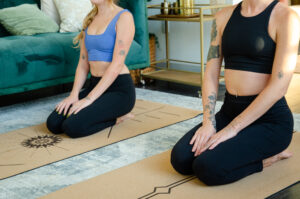
Breathing technique to improve your yoga practice

Restorative Yoga Stretches
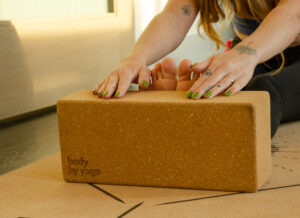
Benefits of yoga before bed
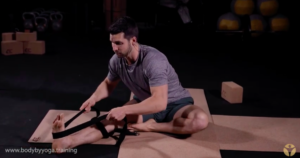
Good Stretch For Lower Back And Hamstrings
Related Articles
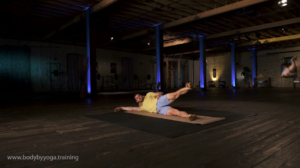
Stretching and Strengthening your hips
In this workout we start slow to warm up your hips. Utilizing low impact workouts like this can be important for beginners and yoga veterans
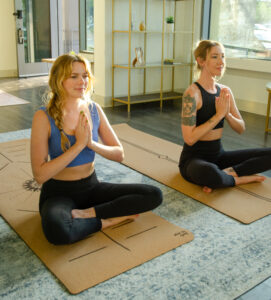
Hatha vs Power yoga
We’ve created our own unique style of slow burn power yoga that combines Hatha yoga, power yoga, bodyweight exercises and physical therapy. This way in

The importance of maintaining correct alignment
Everything in your body is connected, so when one muscle isnt aligned properly it can be a slippery slope to injury. Building a solid foundation
